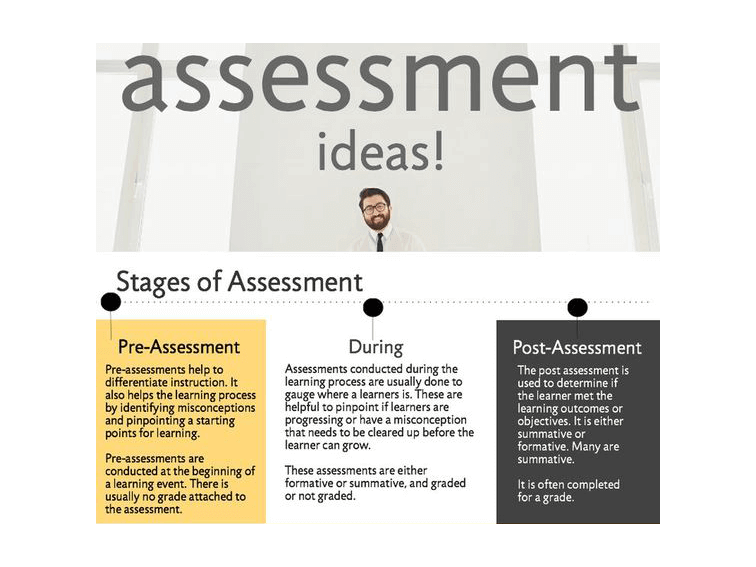
34 Strategies For The Stages Of Assessment: Before, During & After
by TeachThought Staff
The following graphic from the infographic-famous Mia MacMeekin offers 34 strategies for each stage of the assessment process–before, during, and after. Rather than simply repeat them from the graphic, we’ve given a quick primer on the differences between each stage in terms of its purpose/function in the learning process.
Take to the comments with any strategies you find useful in your classroom, and give Mia a follow on twitter and say hello!
See Also: Bloom’s Taxonomy (New Edition) Digital Planning Verbs & Cards
Before/Pre-Assessment
Our take: The purpose of pre-assessment is to provide data to revise planned instruction.
During
Our take: The purpose of assessment during instruction is to begin to measure progress from the pre-assessment, as well as clarifying individual gaps in understanding to further refine planned instruction.
After/Post-Assessment
Our take: We think of the purpose of post-assessment as a way to measure progress from the first two assessments, as well as a way to evaluate the effectiveness of the planned learning sequence on the student. While this assessment is often called ‘summative,’ the most important question any assessment should answer is, “What now?”
See also 5 Out-Of-The Box Assessment Strategies Every Teacher Should Know

34 Strategies For The Stages Of Assessment
